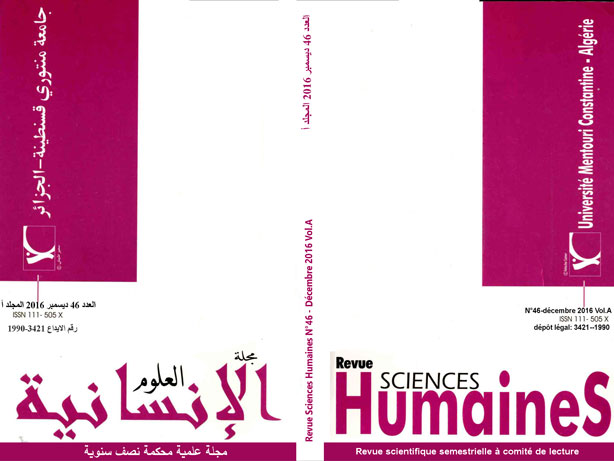The International Legal Framework to Protect Children in Armed Conflict
Mots-clés :
International Legal Framework, Protect Children, Armed ConflictRésumé
The core elements of the international legal framework are strong tools for the protection of children affected by armed conflict. However, there are other tools which have not been discussed in this introduction, such as the Ottawa Convention and the European Union Guidelines on Children and Armed Conflict, which can contribute to protection.
Implementation of this framework needs continued investment in terms of national legislation and allocation of sufficient resources with the involvement of the many agencies such as NGOs, the Special Representative, the Security Council and other UN agencies. This investment should not be limited to children associated with armed forces or armed groups, but instead should include the protection, recovery and reintegration of all children affected by armed conflict, as required under the ACRWC and the CRC.
Special attention is given to remedies for children’s rights violations—for example, through truth and reconciliation commissions at the national and international level, and the prosecution of perpetrators of crimes against children via special courts and tribunals, and the ICC. The Third Optional Protocol to the CRC providing communications procedure can become an extra tool for remedies.
Téléchargements
Références
child soldiers, global report 2004, Coalition to Stop the Use of Child Soldiers, 17 November 2004,found on: http://www.child-soldiers.org.
Paris Principles and Guidelines on Children Associated with Armed Forces or Armed Groups, 2007.
www.icrc.org/eng/resources/documents/misc/customary-law-translations.htm
Customary International Humanitarian Law (CIHL) Study, ICRC,Henckaerts, J-M and Doswald-Beck, L, Cambridge University Press, Cambridge & New York, 2005. www.icrc.org/ihl.nsf/INTRO/612?OpenDocument
Rule 135, ICRC study, Henckaerts, J-M and Doswald-Beck, L, Cambridge University Press, Cambridge & New York, 2005.
Ibid Rule 93.
Ibid, Rule 120.
Ibid, Rules 55, 118 and 131.
Ibid, Rule 129.
Ibid, Rules 105 and 131.
Ibid, Rule 136.
Ibid, Rule 137.
Ibid, Rule 120.
Regulations concerning Laws and Customs of War on Land, The Hague, 18 October 1907, Section III, Military Authority Over the Territory of the Hostile State, Articles 42-56.
Ibid, Article 23(h): “A belligerent is likewise forbidden to compel the national of the hostile party to take part in the operations of war directed against their own country, even if they were in the belligerent’s service before the commencement of the war”.
professor Kamel FILALI, Regional child instrument on the African continent: The African charter on the rights and welfare of the child in AUCIL Journal of International Law, Issue N°1, 2013.
Today only two states have failed to ratify the Convention: The United States of America and South Soudan.
Graça Machel, “Impact of Armed Conflict on Children: Report of the Expert of the Secretary-General”, submitted pursuant to General Assembly Resolution 48/157, UN Doc A/51/306, 26 August 1996.
The Worst Forms of Child Labor Convention, Article 1: “Each Member which ratifies this Convention shall take immediate and effective measures to secure the prohibition and elimination of the worst forms of child labor as a matter of urgency.” Article 2: “For the purposes of this Convention, the term "child" shall apply to all persons under the age of 18”. Article 7(1): “Each member shall take all necessary measures to ensure the effective implementation and enforcement of the provisions, including the provision of penal sanctions, or appropriate other sanctions”.
BhavaniFonseka, The Protection of Child Soldiers in International Law, 2 Asia-Pacific Journal on Human Rights and the Law (2001):2, p. 84.
Nicaragua (merits), (1986) at § 218.
There are also a number of provisions that provide specific protection for pregnant women, for example, “…expectant mothers shall be the object of particular protection and respect” (Article 16).
Articles 13-26, Geneva Convention IV. These articles are primarily concerned with the provision of medical facilities and supplies.
The Statute of the ICC, Article 8,para.2b[xxvi] and Article 8, para.2 e[vii].
Statute of the International Criminal Tribunal for Yugoslavia, 25/05/1993, S/R/827, Article 4(2)(e), available on-line at http://www1.umn.edu/humanrts/icty/statute.html.
Children who are detained and prosecuted are entitled to the protection of the international juvenile justice guarantees, which govern detention, trial, sentencing and rehabilitation: Convention on the Rights of the Child, 20November 1989, United Nations Treaty Series, vol. 1577, pg 3, Article 37, 39, 40, available on-line at http://www.unhcr.org/refworld/docid/3ae6b38f0.html and United Nations, “Standard Minimum Rules for the Administration of Juvenile Justice”, UN Res 40/33-Beijing Rules, 1985; United Nations, “Rules for the Protection of Juveniles Deprived of their Liberty”, UN Res 45/113-JDLs, 1990; United Nations, “Guidelines for the Prevention of Juvenile Delinquency”, UN Res 45/112-Riyadh Guidelines, 1990.
Statute of the International Criminal Tribunal for Rwanda,8/11/1994, S/R/955, Article 2(2)(e), available on-line at http://www2.ohchr.org/english/law/itr.htm.
MatthewHappold,“ChildSoldiers,VictimsorPerpetrators?”(2008)29ULaVerneL Rev56at79.
UnitedNations TransitionalAdministration inEastTimor,Regulation2000/30 Section45OnTransitional Rules of Criminal Procedures, online: EastTimor LawJournal<http://www.eastimorlawjournal.org/UNTAETLaw/Regulations/>
See Human Rights Watch, „The Omar Khadr Case: A Teenager Imprisoned at Guantanamo‟, June 2007, available at www.hrw.com (pointing out the US failure to implement both international and US juvenile justice standards).
Mark Drumbl,“Reimagining ChildSoldiersin InternationalLawandPolicy” (WorkingPaperNo2011-17,WashingtonandLeeUniversitySchoolof Law, September2011)online: <http://papers.ssrn.com/sol3/papers.cfm?abstract_id=1921527>.
















